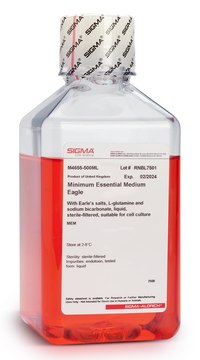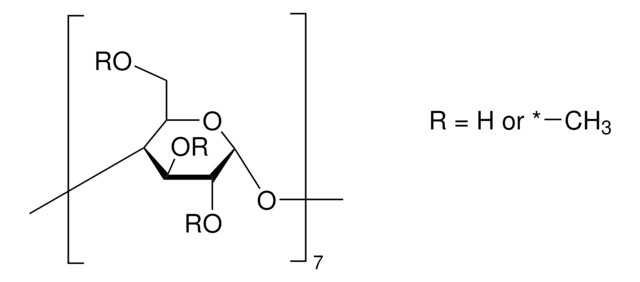T3160
TC-100 Insect Medium
With L-glutamine and sodium bicarbonate, liquid, sterile-filtered, suitable for insect cell culture
Synonym(s):
BML-TC/10
Sign Into View Organizational & Contract Pricing
All Photos(1)
About This Item
Recommended Products
Quality Level
sterility
sterile-filtered
form
liquid
technique(s)
cell culture | insect: suitable
components
glucose: 1.0 g/L
L-glutamine: 0.6 g/L
NaHCO3: 0.35 g/L
shipped in
ambient
storage temp.
2-8°C
Looking for similar products? Visit Product Comparison Guide
General description
TC-100 Insect Medium has been developed to optimize the production of Autographica californica nuclear polyhedrosis virus (NPV) virions by cells from the fall armyworm, Spodoptera frugiperda. It has been found to support the growth of cells derived from a variety of lepidopteran species. The medium is mostly employed in the growth of baculoviruses in lepidopteran cell lines.
Application
For baculovirus culturing in lepidoptera.
TC-100 Insect Medium has been used:
- in the transfection of insect cells in suspension for efficient baculovirus generation
- to harvest Varroa destructor saliva
- as a starter media to culture and maintain insect cells such as Spodoptera frugiperda
also commonly purchased with this product
Product No.
Description
Pricing
Storage Class Code
12 - Non Combustible Liquids
Flash Point(F)
Not applicable
Flash Point(C)
Not applicable
Choose from one of the most recent versions:
Already Own This Product?
Find documentation for the products that you have recently purchased in the Document Library.
Customers Also Viewed
S Roest et al.
MethodsX, 3, 371-377 (2016-05-26)
Baculovirus (BV) mediated insect cell expression system utilizes transfection as a first step to introduce recombinant baculovirus DNA into insect cells. Many labs are still relying on the conventional liposome based transfection method in adherent culture. Here we describe a
Yi Zhang et al.
Journal of economic entomology, 112(2), 505-514 (2018-09-17)
The Varroa destructor (Acari Varroidae) mite is a serious threat to honey bee due to hemolymph feeding and virus transmission. Mite salivary proteins are involved in these interactions. However, the salivary secretome has not been previously characterized. In this paper
Our team of scientists has experience in all areas of research including Life Science, Material Science, Chemical Synthesis, Chromatography, Analytical and many others.
Contact Technical Service




